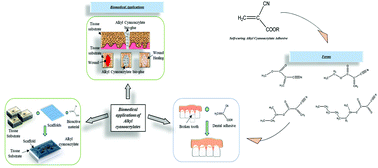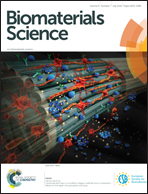Biocompatible alkyl cyanoacrylates and their derivatives as bio-adhesives
Abstract
Cyanoacrylate adhesives and their homologues have elicited interest over the past few decades owing to their applications in the biomedical sector, extending from tissue adhesives to scaffolds to implants to dental material and adhesives, because of their inherent biocompatibility and ability to polymerize solely with moisture, thanks to which they adhere to any substrate containing moisture such as the skin. The ability to tailor formulations of alkyl cyanoacrylate to form derivative compounds to meet application requirements along with their biodegradability in conjunction with their inherent biocompatibility make them highly sought after candidates in the biomedical sector. There has been extensive exploration of cyanoacrylate adhesives and their homologue systems in biomedical applications, but no consolidated literature of the vast data is available. The ability of cyanoacrylate adhesives to cure at low temperatures and without the need for any hardener, which is attributed to the high-strength bonding interaction between two non-amalgamating substrates, with their ease of dispersion and self-curing, avoids the curtailing of the effective utilization of such adhesives in biomedical engineering applications as bio glues for amalgamating tissues, implants, scaffolds etc. This article consolidates copious work on cyanoacrylate adhesives and their derived systems which are functional in versatile biomedical engineering applications such as bio glues, dental material and adhesives and other potential applications.



 Please wait while we load your content...
Please wait while we load your content...